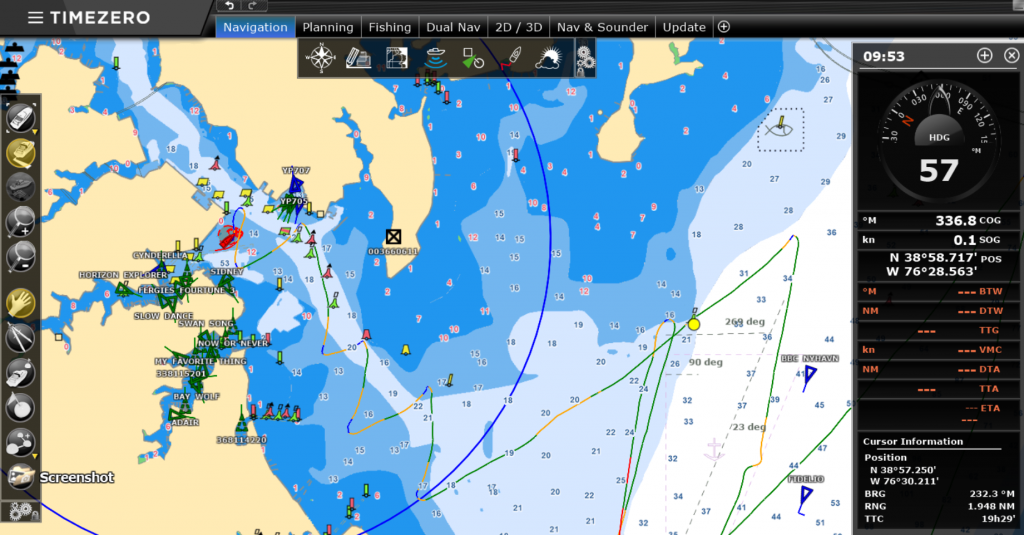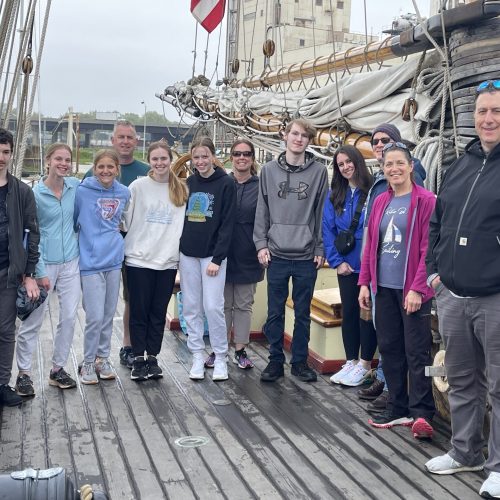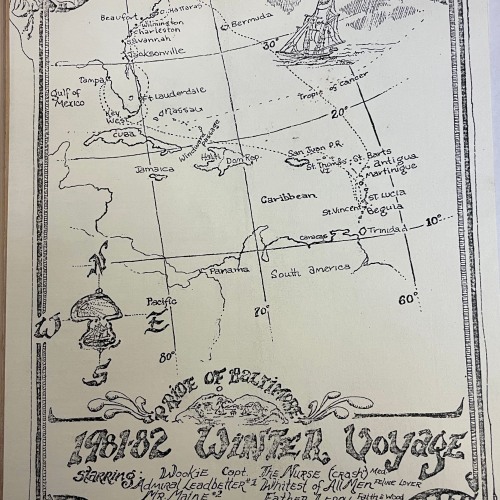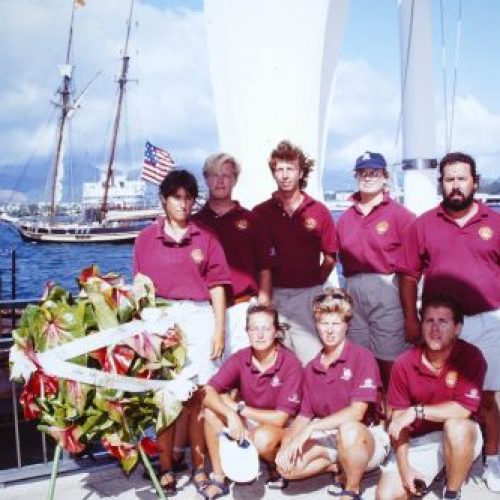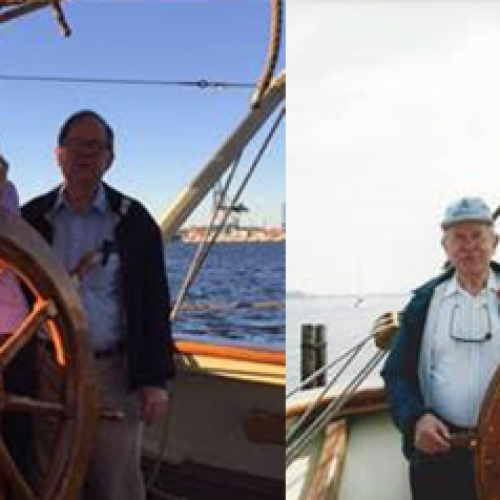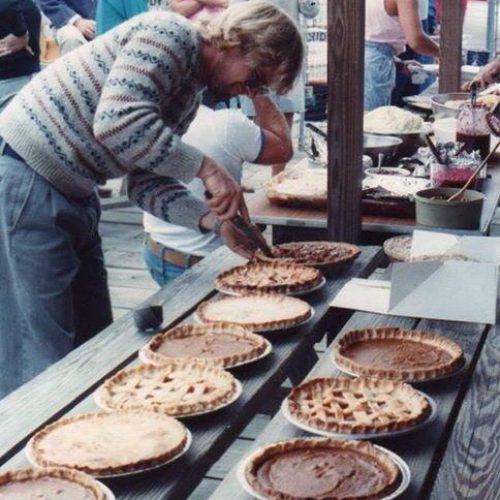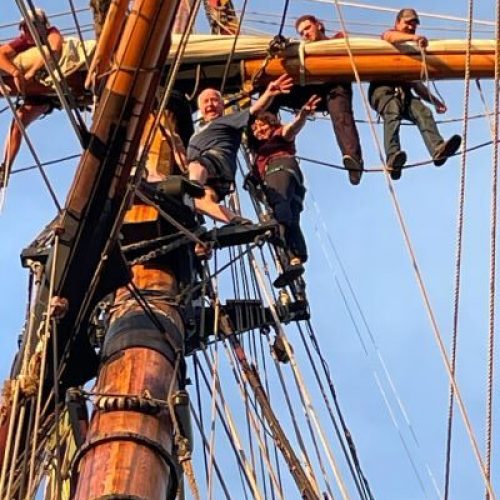Photo: TimeZero display of Pride II‘s track into Annapolis
Date: Tuesday, May 12, 2020
Time: 1900 hours
Location: Anchored at Annapolis, near U.S. Naval Academy eastern seawall
We remained at anchor on the western shore just north of Herring Bay for a couple of hours this morning to re-familiarize the crew with emergency response: MOB (man overboard), fire, and abandon ship.
Today’s marine forecast indicated westerly winds of 10 to 15 knots with gusts to 20. Such winds would have been fine for sailing further south. However, the forecast for Wednesday was for nearly no wind at all. Being this shakedown cruise has no daily destination, I am trying to keep sailing to and from anchoring without engine use. This goal puts a premium on being smart about wind direction as it flows over possible anchoring locations. A simple, sorta’ obvious parameter for selecting an anchorage is achieving a lee from rough sea. It is anxious making to be at anchor just off a lee shore right behind your vessel if there is a sea running. Meanwhile, an anchorage that has fair winds to sail into will want fair winds for sailing away from. Taking into consideration the light winds forecast for Wednesday, with fresh west winds blowing today, it was easy to decide to sail north. What was not so easy to decide was where we would end up.
Sailing away from anchor was simple this morning, being with a west wind, Pride had the entire width of the Chesapeake Bay behind her. When the anchor came up off the bottom, she fell away to port. The jib was set. Being on the port side meant it would be passed over to starboard when the ship continued her three-quarter turn around to the north. During this turn, the yards were shifted from sharp port to sharp starboard and the topmast flags were cleared from their wrap-around topmast tips. After the turn, the port anchor was lifted to the port rail. Then the loose-footed foresail was set. Followed by the square fore-topsail. Then the fore-staysail. Then the mainsail. And Pride fair roared up the Chesapeake Bay, sometimes exceeding 10 knots.
As she passed Thomas Point Light, I studied the wind pattern. The increased wind pattern coming from the Severn River was normal. The gusts as well. It was the gusts I pondered in addition to the direction of flow directly out of the Severn River. I have sailed Pride into Annapolis against a west-northwest breeze. But not a strong breeze. Today’s winds, particularly the gusts at nearly double the standard wind speed, were not great for tacking to an anchoring location at Annapolis. The challenge being for the crew to handle the sails in strong winds. Sail reduction is the means for keeping sail area manageable for the crew. However, sail reduction also means less power for acceleration out of a tack. Short tacks for narrow navigable depths risks not having enough speed during puffs to succeed sailing through the next tack. Alternatively, we could go further up the bay. However, there would not be an interesting anchorage. Just another open to the bay western shore scenario like we had just left. I decided it was worth an effort to sail against the gusty wind into Annapolis. But first, with Pride sailing so fast, we would spend the day reaching up and down the bay near the western side between Thomas Point and the Bay Bridge. The forecast indicated a reduction of wind by evening time. Maybe it would reduce sooner.
And so the crew tacked Pride from reach to reach and the ship fair flew north and south.
By mid-afternoon I was examining more closely the challenge of tacking against the gusts. Wanting to show off Pride with her recognizable square-sail set as she sailed, but the gusts were more than was prudent with the current sail area set, I ordered the foresail taken in. Reducing sail by that much I estimated would likely be enough to be manageable while tacking to windward in the gusts. Normally, sail reduction for the reason of wind strength is a top-down order. But I wanted the square-sail to be up for all ashore to see their Pride making her way up the Severn River Roads toward Annapolis.
So we proceeded into the Severn River. Eight tacks. Plenty of hauling for the crew. In the gusts the square-sail can be very resistant to bringing around through the wind. In the gusts, the jibs can only be passed and sheeted home one at a time due to their sail area. The last tack was right near the northeast corner of the Naval Academy athletic grounds. That last leg to the point of dropping the anchor was when the square topsail was struck. Then both headsails. Pride rounded up to the wind guided by her hard over rudder and her mainsail. With the main boom lashed to the port quarter with the boom tackle, the mainsail went aback on the port side and acted as an air-break against the effort of the hard over rudder turning the ship to the right. Pride stopped quickly and, once drifting astern, the anchor was dropped near 1700 hours and a shot of chain to the waterline was heaved out. The crew tied in harbor-furls rather than sea-stows to present Pride at her normal best for her public. Supper for all hands was at 1800. A full day. And a strong sense of accomplishment.
Signed,
Jan C. Miles, Senior Captain

